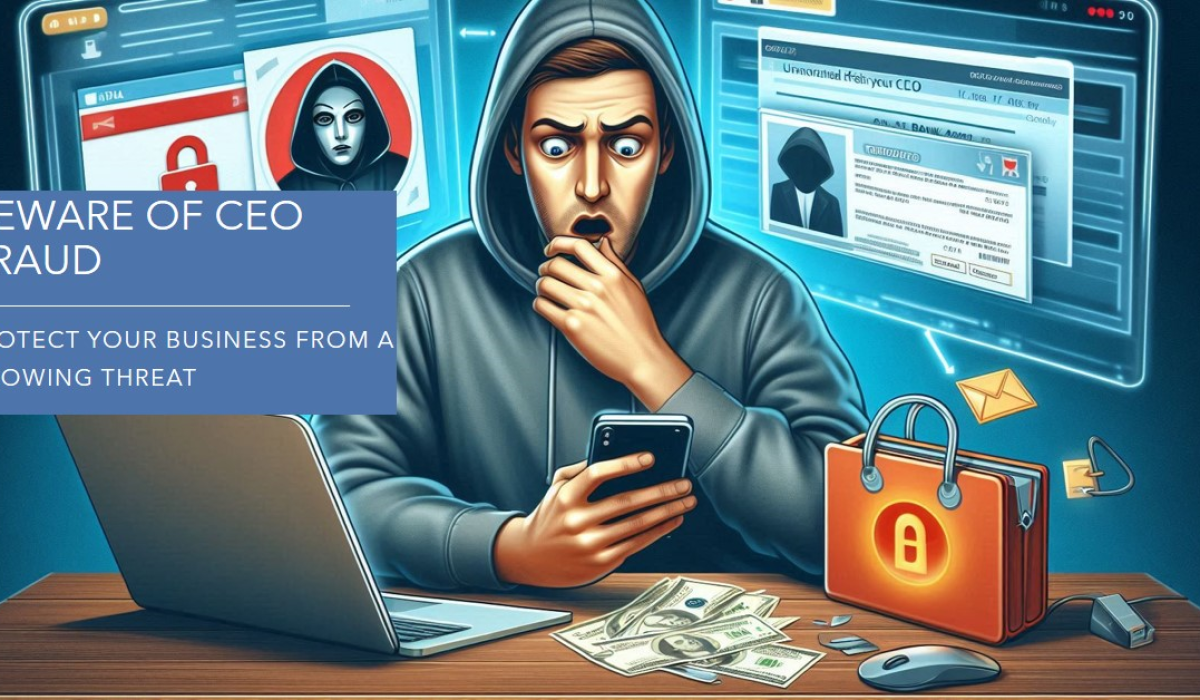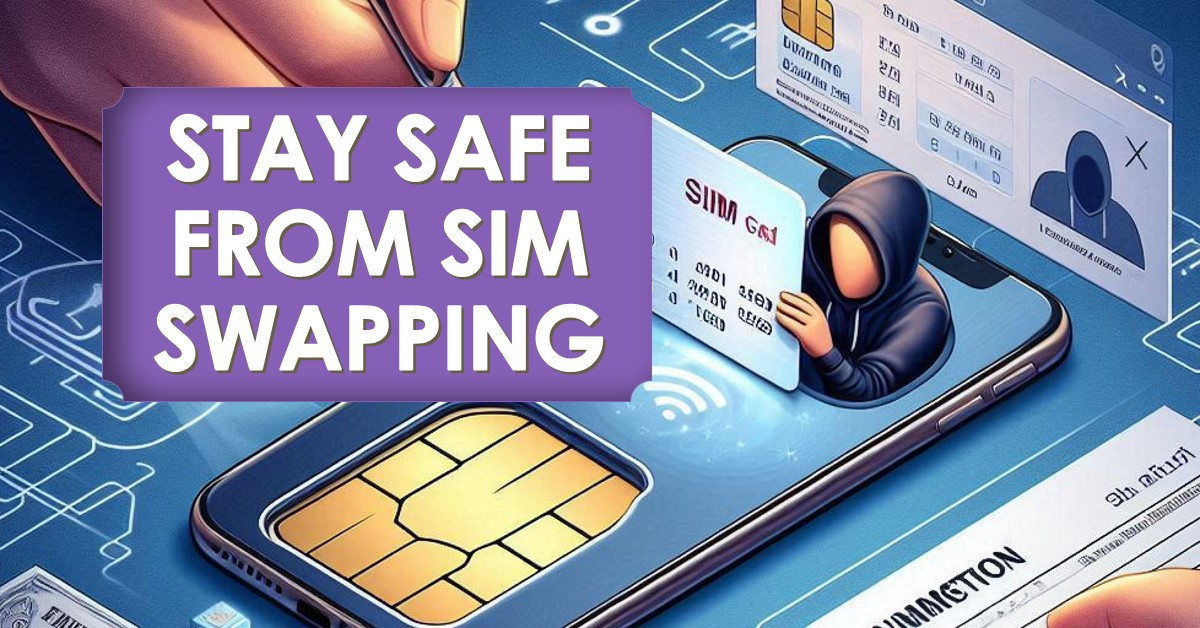CEO fraud, also known as a “spoofing” attack, is a type of social engineering scam where an attacker impersonates a high-level executive, typically the CEO, to trick employees into making unauthorized payments or transferring funds. These attacks often leverage a sense of urgency and authority to pressure employees into acting quickly without proper verification.
Importance of Awareness and Prevention
Understanding CEO fraud is crucial for any organization, regardless of size. The consequences of a successful attack can be severe, including financial loss, reputational damage, and legal implications. By raising awareness about this threat and implementing effective prevention measures, businesses can significantly reduce their vulnerability to such attacks.
What is CEO Fraud?
CEO fraud, also referred to as Business Email Compromise (BEC) or “whaling” when targeting high-ranking executives, is a sophisticated cybercrime where attackers impersonate a legitimate executive or other high-level authority figure to deceive employees into transferring funds or sharing sensitive information.
The attackers typically gain access to email accounts or use social engineering techniques to mimic the communication style and patterns of the targeted executive. They then send fraudulent emails to employees, often requesting urgent payments, transfers of funds, or sensitive information. These requests are designed to exploit the employees’ trust in their superiors and their sense of urgency to comply with requests from senior management.
Common Terms
- Business Email Compromise (BEC): A broader term encompassing various types of email-based scams, including CEO fraud.
- Whhaling: A specific type of BEC targeting high-ranking executives or individuals with significant financial authority.
How CEO Fraud Works
Impersonation of Company Executives
CEO fraud attacks rely on the impersonation of high-level executives to create a sense of urgency and authority. Attackers often target individuals who have access to financial transactions or sensitive information, such as CFOs, accountants, or human resources personnel.
Methods Used
- Spoofed Email Addresses: Attackers create email addresses that closely resemble those of legitimate executives, using subtle variations or typos to deceive recipients.
- Hacked Accounts: In some cases, attackers may gain unauthorized access to legitimate executive email accounts, allowing them to send fraudulent messages directly from the compromised accounts.
Typical Requests
- Urgent Wire Transfers: Attackers often request immediate wire transfers to purported vendors, suppliers, or business partners, emphasizing the need for urgent action to avoid financial penalties or disruptions.
- Sensitive Data: Attackers may request sensitive information such as passwords, social security numbers, or bank account details, which can be used for identity theft or further fraudulent activities.
Real-World Impact of CEO Fraud
Financial Losses
CEO fraud attacks can result in significant financial losses for organizations of all sizes.
In many cases, the fraudulent transfers are executed quickly and with a sense of urgency, making it difficult to detect and prevent. The financial losses can range from thousands to millions of dollars, depending on the size of the organization and the amount of funds transferred.
1. What Is CEO Fraud? – About Attacks, Prevention & More | Proofpoint AU
2. What Is CEO Fraud? | Examples & Prevention Tips – SoSafe
Case Studies
- FACC Group: In 2017, the French aerospace company FACC Group fell victim to a CEO fraud scam, resulting in the loss of €17 million.
- The Law Society of England and Wales: In 2019, the Law Society was targeted by a CEO fraud attack that led to the loss of £1.4 million.
- A Global Manufacturing Company: A large multinational manufacturing company lost over $5 million in a CEO fraud scam that involved a series of fraudulent wire transfers.
These are just a few examples of the significant financial losses that can occur due to CEO fraud. The increasing sophistication of these attacks makes it essential for organizations to be vigilant and implement effective prevention measures.
Warning Signs of CEO Fraud
- Unusual or Urgent Requests: Be wary of requests that are out of the ordinary, especially those that require immediate action without proper authorization.
- Requests for Wire Transfers or Sensitive Information: Requests for wire transfers or sensitive personal or financial information should be treated with caution. Verify the authenticity of the request through multiple channels.
- Use of Unfamiliar Email Addresses or Communication Channels: If you receive a request from an unfamiliar email address or through an unusual communication channel, such as text messages or instant messaging, be suspicious. Verify the sender’s identity through alternative means.
Prevention Strategies
- Verify Requests: Always confirm unusual requests, especially those involving wire transfers or sensitive information, through alternative channels such as phone calls or in-person meetings.
- Multi-Factor Authentication (MFA): Implement MFA for email accounts and financial transactions to add an extra layer of security and make it more difficult for attackers to gain unauthorized access.
- Employee Training: Educate employees about CEO fraud and other phishing attacks. Provide them with training on how to recognize red flags, such as unusual requests, unfamiliar email addresses, or urgent demands. Encourage employees to report any suspicious activity to their supervisors or security team.
What to Do If You Suspect CEO Fraud
- Immediate Steps: If you suspect that you are being targeted in a CEO fraud attempt, immediately stop any actions related to the request. Do not transfer any funds or share sensitive information.
- Reporting the Incident: Contact your supervisor or the security team immediately to report the suspicious activity. Provide as much detail as possible about the request, the sender, and any red flags you observed.
- Internal Procedures for Damage Control: Follow your organization’s internal procedures for responding to security incidents. This may involve freezing accounts, notifying law enforcement, and initiating a forensic investigation.
By taking these steps, you can help to prevent further damage and protect your organization from the financial and reputational consequences of a successful CEO fraud attack.
Legal and Regulatory Aspects of CEO Fraud
Overview of Laws and Regulations
CEO fraud is a serious criminal offense that can have significant legal consequences. Laws and regulations governing cybercrime vary from jurisdiction to jurisdiction, but they generally aim to protect individuals and businesses from financial loss, identity theft, and other harm caused by cyberattacks.
Compliance Requirements for Businesses
Businesses are increasingly expected to implement measures to protect their customers’ data and prevent cyberattacks. This includes complying with various data protection laws and regulations, such as the General Data Protection Regulation (GDPR) in the European Union and the California Consumer Privacy Act (CCPA) in the United States. These laws often require businesses to implement technical and organizational measures to protect personal data, notify authorities of data breaches, and respond to data subject access requests.
Penalties for Perpetrators
The penalties for perpetrators of CEO fraud can be severe. Depending on the jurisdiction, these penalties may include:
- Fines: Significant financial penalties can be imposed on individuals and organizations found guilty of CEO fraud.
- Imprisonment: In serious cases, perpetrators may face imprisonment for a substantial period.
- Restitution: Perpetrators may be required to pay restitution to the victims of their crimes.
It is important to note that the specific penalties for CEO fraud can vary depending on the severity of the offense, the jurisdiction, and the applicable laws and regulations.
Technological Solutions to Prevent CEO Fraud
Cybersecurity Tools and Software
Several cybersecurity tools and software solutions can help organizations prevent CEO fraud and other phishing attacks. These include:
- Email Security Gateways: These gateways can filter and block malicious emails, including those that are designed to impersonate executives.
- Advanced Threat Protection (ATP): ATP solutions can detect and prevent sophisticated attacks, including CEO fraud, by analyzing email content, attachments, and sender behavior.
- User and Entity Behavior Analytics (UEBA): UEBA tools can monitor user behavior and identify anomalies that may indicate a compromise or fraudulent activity.
- Data Loss Prevention (DLP): DLP solutions can help prevent sensitive data from being exfiltrated from the organization, reducing the risk of financial loss in the event of a successful CEO fraud attack.
Role of AI and Machine Learning
Artificial intelligence (AI) and machine learning can play a crucial role in detecting CEO fraud. These technologies can be used to:
- Analyze Email Content: AI algorithms can analyze the content of emails for signs of deception or impersonation, such as unusual language patterns, grammatical errors, or inconsistencies.
- Identify Anomalies: Machine learning models can identify anomalies in user behavior, such as unusual login times, large transfers of funds, or unauthorized access to sensitive data.
- Learn from Past Attacks: AI and machine learning can learn from past CEO fraud attacks to improve their ability to detect and prevent future incidents.
Importance of Regular Security Audits
Regular security audits are essential for identifying vulnerabilities and weaknesses in an organization’s security posture. These audits can help organizations:
- Identify Risks: Security audits can identify potential risks and threats, including CEO fraud.
- Assess Compliance: Audits can help ensure compliance with relevant laws and regulations, such as GDPR and CCPA.
- Improve Security Measures: Based on the findings of security audits, organizations can implement improvements to their security measures and reduce their vulnerability to attacks.
Role of Leadership in Preventing CEO Fraud
How Executives Can Set the Tone for Cybersecurity
Executives play a critical role in establishing a strong cybersecurity culture within an organization. By demonstrating their commitment to security, leaders can motivate employees to take cybersecurity seriously and prioritize it in their daily work.
Importance of a Security-First Culture
A security-first culture is essential for preventing CEO fraud and other cyberattacks. When employees are aware of the risks and understand the importance of security, they are more likely to report suspicious activity and follow best practices.
Leadership Training and Awareness Programs
Executives should participate in cybersecurity training and awareness programs to gain a better understanding of the threats and risks facing their organization. Additionally, leaders should encourage their teams to participate in similar programs and ensure that all employees are aware of the company’s cybersecurity policies and procedures.
Future Trends in CEO Fraud
Emerging Tactics and Techniques
Scammers are constantly evolving their tactics and techniques to evade detection. Some emerging trends in CEO fraud include:
- Deepfake Technology: Scammers may use deepfake technology to create highly realistic audio or video recordings of executives, making it more difficult to detect fraudulent communications.
- Social Media Attacks: Scammers may target executives through social media platforms to gather information and build trust before launching an attack.
- Supply Chain Attacks: Scammers may target suppliers or vendors to gain access to an organization’s systems and networks.
Predictions for the Future of Cyber Fraud
As technology continues to advance, we can expect to see even more sophisticated and targeted CEO fraud attacks. Scammers will likely become more adept at using AI and machine learning to automate their attacks and evade detection.
How Businesses Can Stay Ahead of Evolving Threats
To stay ahead of evolving threats, businesses must continuously invest in cybersecurity measures and stay informed about the latest trends and best practices. This includes:
- Regularly Updating Security Systems: Ensure that all security software and hardware is kept up-to-date with the latest patches and updates.
- Staying Informed: Stay informed about the latest cybersecurity threats and trends by following industry news and participating in training programs.
- Investing in Research and Development: Invest in research and development to explore new technologies and techniques for preventing CEO fraud and other cyberattacks.
Conclusion
CEO fraud is a serious threat that can have significant financial and reputational consequences for organizations. By understanding the risks, implementing prevention measures, and staying vigilant, businesses can protect themselves from these attacks.
It is essential for organizations to have a strong cybersecurity culture and to invest in the necessary tools and technologies to prevent CEO fraud. By taking a proactive approach, businesses can reduce their vulnerability to these attacks and protect their assets and reputation.





